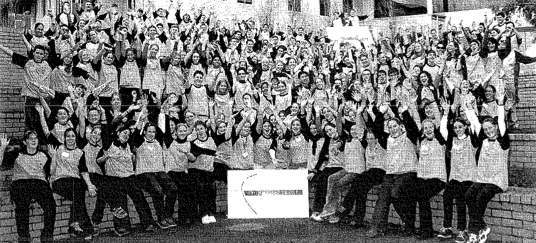
About Us
Our History
A legacy of student voice
The Australian Council for Student Voice (ACSV) stands on the shoulders of generations of students, educators, and advocates who have worked tirelessly to embed student voice, agency, and participation in education. The journey toward meaningful student involvement in decision-making has been decades in the making, shaped by grassroots activism, government initiatives, and collaborative efforts between students, teachers, and supporters.
Early Foundations: The Beginnings of a Movement
The 1970s saw the emergence of ideas about student participation in education, with pioneering schools like Swinburne Community School and Lynall Hall Community School trialing ways to increase student involvement in decision-making. This was part of a broader global movement, with school strikes in the UK and Australia highlighting the demand for student representation. The Victorian Secondary Students Union (VSSU), formed in the early 1970s, was among the first attempts at a student-led organisation in Australia.
The momentum continued into the 1980s, with the Victorian Ministry of Education recognising the importance of student participation through a series of policy papers that acknowledged student rights and empowerment. In 1984, this led to a mandate requiring all Victorian government school councils to include a student representative. Nationally, the Australian Network of Secondary Students (ANSS) was formed to provide a collective student voice, though challenges in maintaining representative networks saw it eventually dissolve.
Expanding the Movement: National and State-Based Conferences
Throughout the 1990s, student voice became a more widely recognised term, and local, state, and national student conferences became a key avenue for advocacy. The National Student Participation Conferences (NASPACs) were held in Melbourne (1995), Sydney (1997), and Hobart (1999), bringing together students to discuss education issues and build representative organisations. State governments also played a role, with the New South Wales Department of Education sponsoring student conferences and developing a Charter for Student Representative Councils (SRCs) in 2006.
In Victoria, the student voice movement gained further momentum. The Paving the Way Conference in 2001 brought together 300 students who voted to establish the Victorian Secondary Students Network (VSSN). This led to the creation of VicSRC in 2003, an independent, student-led peak body advocating for students at the highest levels of education decision-making.
Towards a National Student Voice Body
While VicSRC established a strong foundation for student voice in Victoria, the need for a national platform remained. Over the years, students, educators, and researchers across Australia continued working to strengthen student representation and ensure that student voice was embedded in education systems. This growing momentum led to the establishment of the Australian Council for Student Voice (ACSV), which now serves as the national peak body advocating for student agency, participation, and leadership.
ACSV connects students, educators, policymakers, and researchers to advance student voice in schools, education policy, and broader civic engagement. Our work builds on the legacy of past student movements, ensuring that student voice is not just heard but meaningfully acted upon.
Today, student voice is recognised as a fundamental part of an inclusive and democratic education system. The ACSV continues to push for systemic change, ensuring that students are empowered to shape their education and contribute to their communities.

Our Coat of Arms
The coat of arms of the Australian Council for Student Voice brings together four emblematic elements, each representing a foundational aspect of the organisation’s mission and identity. Quartered in blue, orange, and white and unified by a shared purpose, the shield communicates both the vision and values that guide our work nationally.
In the top-left quadrant, the megaphone symbolises the amplification of student voice; not merely as expression, but as a vital democratic contribution to the life of schools and society. It affirms our belief that every student should be heard, valued, and equipped to shape the world around them.
The top-right quadrant features an open book, representing the continual sharing, building, and challenging of knowledge. This symbol reflects our commitment to learning as a reciprocal process; one that recognises students not only as recipients of knowledge but also as contributors, creators, and critics within educational communities.
In the bottom-left quadrant, the Commonwealth Star with its seven points reflects the national reach of the Council’s work across all states and territories. It signifies unity in diversity and a commitment to fostering student voice as a movement with broad, inclusive, and representative impact.
Finally, the bottom-right quadrant displays a handshake, symbolising partnership, solidarity, and our work across generational, institutional, and ideological divides. It captures the essence of student–adult collaboration and the Council’s ethos of working with, not for, young people.
Beneath the shield, the Latin motto “Vocem Discipulorum Audite” (“Hear the voice of the students”) serves as a guiding imperative: to listen with intention, to act with integrity, and to centre student leadership in the pursuit of a more just and participatory education system.
Our coat of arms is a symbolic representation of the Council’s values, vision, and national identity. It is reserved for official use in contexts that reflect the organisation’s formal role, including publications, programs, awards, and ceremonial events. The shield serves as a visual statement of the Council’s commitment to student voice, learning, partnership, and collective impact. Use of the emblem should uphold the integrity and purpose of the Council’s work, and it should not be modified or reproduced without permission from the ACSV. When used appropriately, the shield functions not only as a mark of identity, but as a call to action: to hear, honour, and elevate the voices of students across Australia.

















